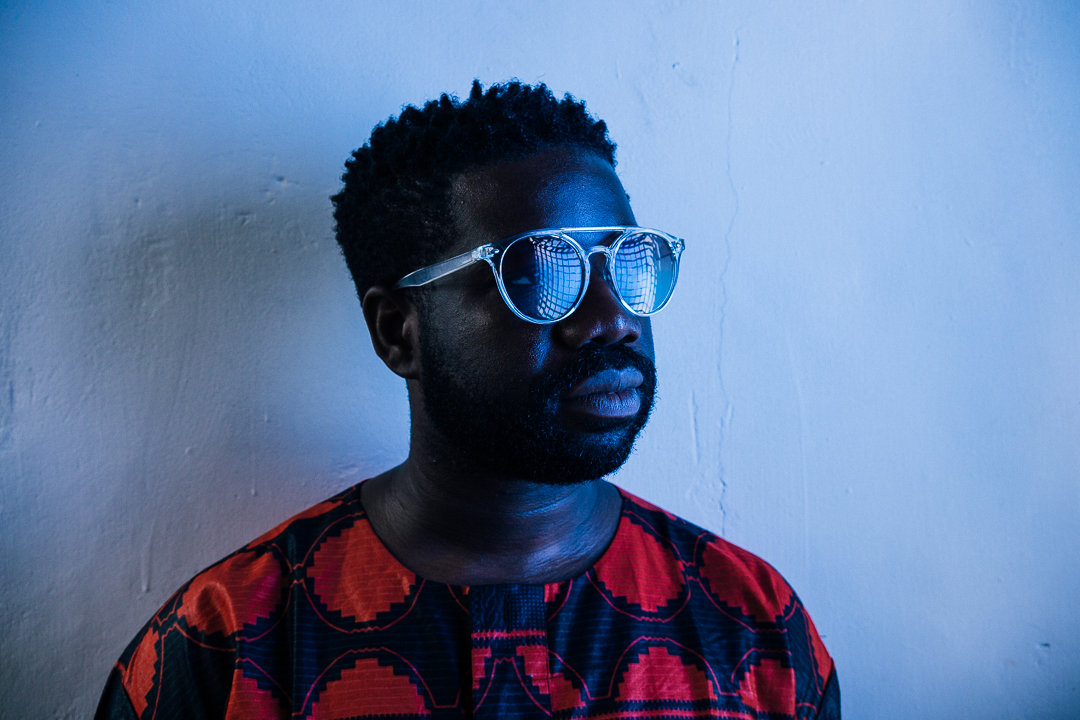Sinistarr can’t sit still, even in quarantine. An artist who has spent most of the last decade globetrotting from places like China and Palestine to London and Calgary, staying at home seems like it would be a challenge. However, Sinistarr — whose real name is Jeremy Howard — finds himself busier than ever. Bouncing between livestreams and radio shows, he still finds time to finish projects in the studio he set up at home. Yet, it’s as though his hunger for breaks still hasn’t been satisfied.
“[2020] is the first time I’m seeing this kind of money from making music,” said Howard over the phone. He has supported himself, for the most part, playing gigs and making music for the last several years, but according to him, this is the year he’s finally making enough to rearrange his studio and donate almost recklessly to mutual aids and protest funds. The literal embodiment of putting his money where his mouth is, Howard’s presence in the world of drum n’ bass is a beacon for other Black producers within the genre who often find themselves outnumbered in a sea of white bodies.
Fans of drum n’ bass don’t need to look too deeply to see how the pioneers of the genre were primarily Black. Arguably the godmother of drum n’ bass, Kemistry helped create the movement out of the early days of jungle, a similarly fast-paced style known for its use of the “amen break” and its incorporation of dub and ragga samples. Lemon D was a pivotal figure in the jungle canon, as are artists like LTJ Bukem and Goldie, who dated and collaborated with Kemistry and was one of the first people to play jungle, hardcore and drum n’ bass on mainstream airwaves.
Fabio & Grooverider, hosts of the party series Rage influenced Kemistry and set the groundwork for all of the faster dance music subgenres growing in popularity throughout the ’90s and into the 2000s. All of these artists, as well as countless others who continue to transform the genre, are all Black. “When I play and I see people like me, it just feels right,” Howard said. “We wouldn’t see these types of conversations in Denver back in 2012, or even two years ago, but I’m glad people are finally waking up and listening and learning about the history of this music.”
The eldest of three, Howard was born in Detroit to Liberian parents who briefly returned to their motherland in 1988 before coming back to the States as the nation descended into a bloody civil war. His father worked as a mechanical engineer for the City of Detroit, and Howard briefly enrolled in nursing school before leaving to focus on music full-time. Yet, having a career entrenched in the club life is pretty difficult to explain to immigrant parents with high expectations. After producing for 15 years though, fortunes turned toward more and more success for Howard. The final approval from his parents seemed to have come not from international touring or even record sales. “I’ve shown them several books that I’m featured in, and they were like, ‘okay this is legit,’” referring to a book showcasing prominent artists from Detroit titled, “313 One Love” and another one was done by Knowledge Magazine, a drum-n’-bass-centric publication whose 25-year anniversary book featured prominent drum n’ bass artists — including Howard.
In 2003, Howard began DJing, and around 2005 he began to mess around with production. But it wasn’t until 2006 that he began to take himself seriously as an artist, and he hit the ground running with his first release just a year later in 2007. In 2008, Howard landed his first release on Hospital Records, easily one of the biggest and most well-known labels in the world for drum n’ bass.
By 2011, Howard put out his first 12” release, “Mainstay / Solar 9” on the label Metalheadz’ breakbeat series, Metalheadz Platinum. The label, founded in 1994 by Goldie, Kemistry and her friend and frequent collaborator, DJ Storm, was one of the pioneering labels for establishing drum n’ bass as a genre of its own, as well as ushering the genre to the brink of commercial success in the UK. Howard then moved from Detroit to Denver in 2012, quickly joining the community of 160 bpm fanatics over at the Black Box and rising the ranks to a residency in Recon DnB, a show that takes place once a month at the Black Box and multiple times a week on the airwaves.
After staying for some time in Denver, Howard moved to San Diego for the sake of a relationship. When that ended, he found himself back in Detroit for a little bit before making his way to Calgary, Canada, where he lived for two and a half years. “What Denver has for dubstep, Calgary has for drum n bass,” Howard said as an explanation for the move. Not one to rest much, he wasted no time embedding himself in the Calgary drum n’ bass scene, during which he was able to put several more releases under his belt on labels like Tectonic Recordings, Exit Records and again on Hospital Records. Throughout his time living away from Denver, Howard also remained a resident of Recon and flew back often to play shows at the Black Box.
It wasn’t long before Howard got restless again and headed back to Detroit before returning to Denver last year — this time, hopefully for good. Settling into this new D-town, this Detroiter has brought high-octane, yet playful, energy onto the dance floor. Blending juke and hip-hop seamlessly into darkly dubbed breaks, Howard’s seemingly archival knowledge of music across a variety of genres is not only intimidating but downright jaw-dropping. His productions, known to jump from style to style but with a constantly deep, dark, and near-aqueous sound signature to the nom de guerre.
Just last Friday, Sinistarr released a remix on Noisia’s label, Vision Recordings, which completely reconstructs the original track into an experience that’s entirely something else. He also recently released a remix of South African singer Toya Delazy’s “Find Di Boy,” a beautiful rework full of lush melodies that pair heavenly with Delazy’s honeyed voice.
You can find more of Sinistarr’s music on his Soundcloud and Bandcamp, and catch him on the many livestreams he participates in. To keep up with the prolific artist, follow him on Instagram, Twitter and Facebook.





